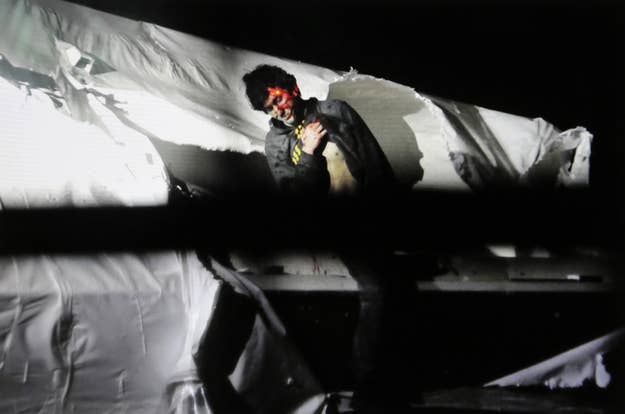
Documents unsealed by a federal court Monday reveal the extent of Boston Marathon bombing suspect Dzhokhar Tsarnaev's injuries following his capture by police.
In one April 22 court transcript, Dr. Stephen Ray Odom, a trauma surgeon at Beth Israel Deaconess Medical Center, describes Tsarnaev's fractured skull and badly injured face and confirms that Tsarnaev could vocally respond to questions. (During the chaotic days following his arrest, some news outlets reported that he was unable to speak.)
Tsarnaev, 20, is suspected of working with his brother, Tamerlan, to place two homemade bombs near the marathon's finish line on April 15, killing three and injuring more than 260. The brothers are also suspected of killing an MIT police while attempting to flee Boston on the Friday after the bombing. Tamerlan died later that night, in a dramatic shoot-out with police.
From Dr. Odom's transcript:
THE COURT: What is his medical state at the present time?
DR. ODOM: Guarded.
THE COURT: Can you give me a brief summary of his injuries?
DR. ODOM: He has multiple gunshot wounds, the most severe of which appears to have entered through the left side inside of his mouth and exited the left face, lower face. This was a high-powered injury that has resulted in skull-base fracture, with injuries to the middle ear, the skull base, the lateral portion of his C1 vertebrae, with a significant soft-tissue injury, as well as injury to the pharynx, the mouth, and a small vascular injury that's been treated. He has, in addition to this, some ophthalmologic injuries that have been treated. He has multiple gunshots wounds to the extremities that have been treated with dressings to the lower extremities; and in the case of his left hand, he had multiple bony injuries as well that were treated with fixation and soft-tissue coverage, as well as tendon repair and vascular ligation.
THE COURT: Internal or external fixation?
DR. ODOM: The pins are internal, but the wound is still open.
THE COURT: Does he know where he is, and does he know what has happened since arriving at the hospital in terms of procedures?
DR. ODOM: He definitely knows where he is. He knows that he has had multiple procedures, but I'm not sure how aware he is of the specifics. He knows that he has an injury to the neck and to the hand.
THE COURT: In your professional opinion, based on your training and experience, is he lucid enough to understand and respond to basic questions, if not vocally, using hand signals?
DR. ODOM: He is able to respond vocally.
Other documents unsealed on Monday reveal a struggle between prosecutors and Tsarnaev's lawyers regarding whether or not the court should receive photographic updates of Tsarnaev's condition after he left the hospital and entered prison.
On July 11, Tsarnaev pleaded not guilty to all charges in his 30-count indictment, including charges of using a weapon of mass destruction and bombing a place of public use.
